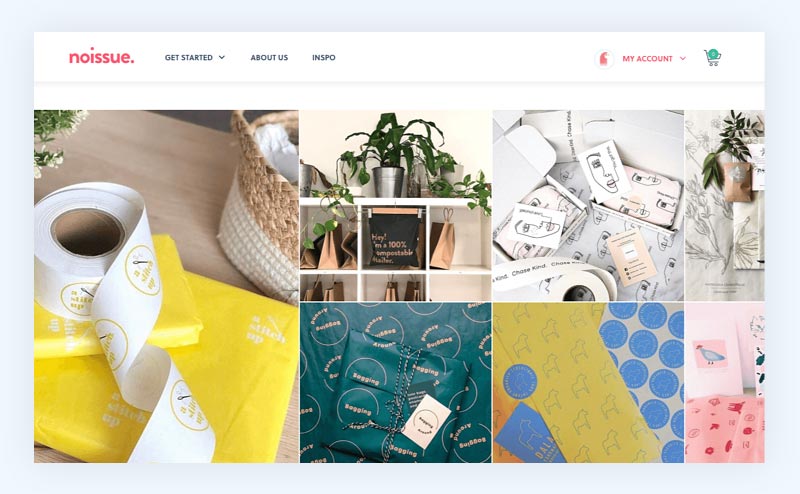
Environmental sustainability is a prevalent topic in the ecommerce industry. Consumers have become acutely aware of the impact online shopping has on the environment and want to rectify this situation (without giving up the convenience they have grown accustomed to).
So, just how does the ecommerce industry impact the environment?
- In the US last year, e-merchants shipped 165 billion packages. Loggers chopped down 1 billion trees worth of cardboard to create the necessary packaging materials. Scientists expect this figure to double in the next decade
- These 165 billion packages are then delivered, mostly by plane or truck which are two of the worst modes of transport when it comes to CO2 emissions
- Popular “bubble mailers” often wrongly end up in recycling plants, getting stuck in the machinery and requiring the entire system to shut down while they’re cut free
Customers are looking for e-commerce brands that offer environmentally sustainable solutions to such problems. In fact, 81% of shoppers around the globe agree with the statement: “It is extremely or very important that companies implement programs to improve the environment”.
To meet the growing demands of consumers (and to save the environment along the way) e-merchants all over the world are stepping up to the challenge, providing customers with environmentally sustainable e-commerce options.
So, what are the best ways to make your online store more environmentally conscious without sacrificing customer convenience? Here are 5 easy steps toward sustainable e-commerce:
1. Switch to sustainable e-commerce packaging materials
The excessive use of un-recyclable packaging materials, such as bubble mailers, is one of the most environmentally harmful habits of the e-commerce industry. One key way that brands all around the globe are starting to solve this problem is switching to 100% recyclable packaging.
The aptly named Package Free Shop takes it a step further and ships products in not only 100% recyclable but also fully compostable boxes, complete with recyclable paper wrapping tape.
If you aren’t up to creating recyclable or compostable packaging materials yourself, don’t stress! Sustainable packaging startup Noissue is ready to solve the problem for you, providing e-merchants with compostable mailers made entirely from corn starch. They will break down completely in under 6 months!

2. Switch to environmentally conscious shipping methods
As mentioned earlier, we ship around 165 billion packages within the US every year and each of these packages needs to travel by plane, train, or truck to reach its final destination. As a result, freight is now the fastest-growing source of greenhouse gases and a major source of local air pollution.
Thankfully, over the past few years, some forward-thinking e-commerce companies have implemented policies to help solve this problem. Take Etsy for example, who has committed to ‘zero-emission shipping’, which they will achieve by purchasing carbon offsets going toward wind power generation, forest protection, and further research into sustainability.
FedEx and Ryder have taken a different approach to solve the issue, and have teamed up to deliver goods with environmentally conscious electric vans, 1000 of which are already operational.
While an innovative approach such as this is only really available for e-commerce stores with massive budgets, there are many easy solutions that you can implement today.
Giving customers the option to group many orders together so that you only need one lot of packaging materials and a single delivery is an easy solution. While it may mean customers have to wait an extra couple of days for some items, those who are environmentally conscious will be happy to wait and be glad to have the option.
Brands could also offer a lower carbon delivery option at checkout, notifying customers that while this delivery method may take a couple of days longer it will benefit the environment. You could even offer a discount to customers who select this low CO2 method.
3. Try to minimize swaps and returns
It’s not only the initial delivery of goods that e-merchants should be conscious of. The ease of returning or swapping items is another big contributor to CO2 emissions, shipping one order 2 or 3 times instead of just once.
Here are some easily implemented steps e-merchants can take to minimize the swapping or returning of goods:
- Make sure that your product descriptions and sizing systems are precise so that customers always receive exactly what they’re expecting. ASOS is a great example of this: they’ve implemented an AR technology that shows customers what garments will look on their body shape and size
- If you have a physical store, make sure you offer in-store returns or product swaps for customers who live nearby
- Pack your products well (in sustainable packaging) so that they never arrive damaged
- Get rid of your ‘free returns’ policy - customers may not love this idea but it will definitely discourage any flippant trying-on and returning of product

4. Say ‘no’ to unnecessary boxes
We’ve said it before and we’ll say it again: the over-packaging of products has a damaging impact on our environment. E-commerce giant Amazon has been at the forefront when it comes to getting rid of unnecessary boxes with their ‘frustration-free packaging’ program. Through this program, Amazon asks vendors to adopt new packaging standards without using any excess boxes. They encourage retailers to send items in their original packaging wherever possible and impose small fines on vendors who don’t comply.
Through this simple program, Amazon has eliminated more than 500 million boxes and 244,000 tonnes of packaging material.
5. Get creative with sustainable e-commerce solutions
The phrase “think outside the box” has never been more fitting. Bubble sleeves and over-boxing are out, there are many sustainable ways to protect a product for shipping. By getting creative with environmentally conscious packaging solutions, brands open themselves up to new marketing opportunities that may help bring in clients.
Take skincare company Banish for example, who wrap their products in branded socks instead of harmful bubble wrap. Custom socks prevent damage, remove the need for unrecyclable materials, and win the company free marketing on customer’s ankles around the globe.
Target implemented another creative solution to the e-commerce packaging problem. They encouraged customers to reuse their packaging by decorating their 3 most common box sizes with fun designs. These designs inspire customers to turn their boxes into race cars, dog houses, and other fun items.
Embracing environmental sustainability is a necessity for any e-commerce company that wants to stay ahead of the curve. The buying power of the most environmentally conscious generations of shoppers (Millenials and Gen Z) is growing rapidly. If brands want to win the business of these newly powerful shoppers, they need to align with their values. Sales will boom and mother nature will thank you.


Submit a Comment